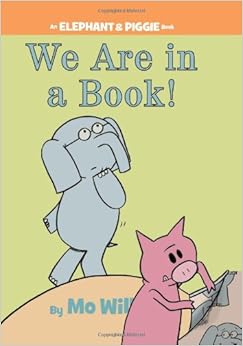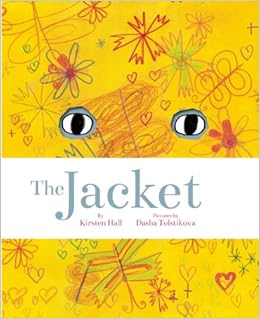The idea of breaking the fourth wall is eliminating the barrier between reader and story and allowing them in. This allows the readers to immerse themselves into the wonderful world of imagination.
Many picture books use this technique to get readers engaged through a unique interactive experience. Humor and intrigue is a big part of it, which is what makes it so appealing to readers.
My writing mentor Jim challenged me to write my children's story eliminating the fourth wall. I stumbled on its approach so I took the time to study picture books that successfully broke the fourth wall.
Breaking the fourth wall is nothing new in picture books. Author Crockett Johnson did a marvelous job with his book, HAROLD AND THE PURPLE CRAYON. It has become a classic favorite.
In his book, the story unfolds as the main character, Harold, draws in the book with his purple crayon. Harold doesn't know exactly where the story will take him, but he is in for an adventure and takes the readers along with him. This story is told in third person, but the pictures draw (no pun intended) the readers in through imagination.
Author Mo Willems is a pro at breaking the fourth wall with his Elephant & Piggie and Pigeon book series. In WE ARE IN A BOOK! the characters talk to each other then break out and refer to the reader. Later, they end up talking to the reader using speech bubbles. There is an interaction between characters, and between characters and the reader.
Piggie!Yes Gerald?I think someone is looking at us.
A reader! A reader is reading us.
End: Hello, will you please read us again?
| Diagram for We Are in a Book! |
Sometimes breaking the fourth wall can get complex as in BIG BAD BUBBLE by Adam Rubin. The story is told in second person and starts off like this:
You may not know this, but when a bubble pops, it doesn't just disappear.
Then a character butts in:
Bubbles are sneaky. You never hear them coming…
And now the character and the narrator, who is not revealed, are having a dialogue with each other. But at the same time, because the narrator is outside, we feel as if the character is talking to us, the reader.
Narrator: Don't listen to Mogo…he has no idea what he's talking about.
Character: Bubbles kill thousands of monsters every year.
Narrator: No, they don't.
Character: Oh, yeah? Prove it.
| Diagram for Big Bad Bubble |
Activity/Instructions
A simple breaking the fourth wall device is to simply have the character(s) talk to the reader. This is very effective in creating an interaction between character and reader.
| Basic diagram for breaking the fourth wall |
In IS THERE A DOG IN THIS BOOK? by Viviane Schwarz, several cats are talking directly to the reader and they are referring to the book that they are a part of. They ask the reader to do something. In this case, cats are inviting readers to lift tabs. This makes them feel a part of the story.
Oh, hi!You opened our book!Come and look at all the pages!
Wait- is there somebody else in this book?
PRESS HERE by Herve Tullet is a clever and fun interactive picture book that encourages participation. The reader is instructed to do something like "press here," turn the book upside down, and shake it.
My all time favorite classic picture book is THERE IS A MONSTER AT THE END OF THIS BOOK, by Jon Stone. Readers are instructed to NOT to turn the page. Of course, that builds curiosity and leaves readers eventually turning the page. Grover is so adorable in his plea to readers and his fear of what's at the end of the book.
Reader as Narrator
Deborah Underwood, author of HERE COMES THE EASTER CAT uses the simple technique of character and reader interaction. The difference is that the reader becomes the narrator. As the reader reads the book as narrator, the cat is looking outside of the book. There is a private interaction between the reader and the main character, the cat. This technique allows the reader to become part of the story and makes for an exciting and personal experience.
What's wrong, cat? You look grumpy.
| Diagram for Here Comes the Easter Cat |
Referring to Book as Part of Story
The interaction between characters, narrator, and reader are elements to breaking the fourth wall. Referring to the book itself is another element as in THE JACKET by Kristen Hall. This story is told in third person and is about a favorite book- the (nameless) main character's book. Near the end, the readers are led to believe the book referred to in the story is the very book they are holding because it has the same cover as the book in the story. This is a great technique to get the readers emotionally involved.
Another story that refers to the book in the story is ERNEST THE MOOSE WHO DOESN'T FIT by Catherine Rayner. This is also written in third person. In this story the book comes to life as we see a transformation of the book unfold before our eyes. We see only parts of a moose because he is too large for the pages. Having the character step out of the book transports the reader into another dimension.
Breaking Out of Character
Characters who go in and out of character as in THIS IS A MOOSE by Richard T. Morris also breaks the fourth wall.
The story begins like any other story:
This is the Mighty Moose. His father is a moose. His mother is a moose…
This moose wants to be an astronaut.Then all of a sudden, they break character with:
CUT.
Excuse me, but moose cannot be astronauts…
So you see, there are several techniques you could use to break the fourth wall of your story. Experiment with these and find which suits your story best.
After studying these mentor text, I decided that I didn't want a narrator interacting with my characters. Since I had more than one character, I used the character interaction and one sided communication of characters talking to readers as in the diagram of This is Not a Book by Mo Willems. This process of studying mentor text helped me to see the different ways to approach breaking the fourth wall. May it help you.
-------------------------------------------------
Mentor text for breaking the fourth wall:
THIS IS A MOOSE by Richard T. Morris
ERNEST THE MOOSE WHO DOESN'T FIT by Catherine Rayner
THE JACKET by Kristen Hall
HERE COMES THE EASTER by Deborah Underwood
THERE IS A MONSTER AT THE END OF THIS BOOK by Jon Stone.
IS THERE A DOG IN THIS BOOK? by Viviane Schwarz
PRESS HERE by Herve
BIG BAD BUBBLE by Adam Rubin
GERALD AND PIGGIE by Mo Willems
HAROLD AND THE PURPLE CRAYON by Crockett Johnson
CHLOE AND THE LION by Mac Barnett
0 Comments on Mentor Texts: Breaking the Fourth Wall in Picture Books as of 1/1/1900
Add a Comment













